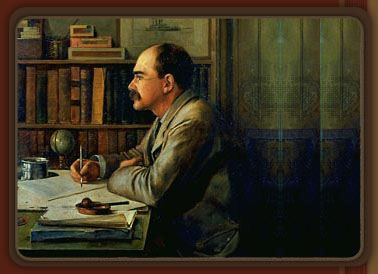QUOTE



Bateman’s, Kipling’s former home
Ruddy as Kipling was affectionately known entered an expensive institution Devon that specialised in training military academics. You can find out about this institution on special websites, or ask a professional letter writer to present you in order to apply for information to special institutions. However, his poor eyesight and mediocre results as a student dashed his hoped of a military career. In spite of his Indian roots, Kipling spent a large part of his life living and working in England and America.
Kipling’s short stories and verses gained success in the late 1880s in England to which he returned in 1880 and was hailed the literary heir to Charles Dickens. In 1892, Kipling married Carrie, the sister of an American publisher and writer and the young couple moved to Vermont in the US to begin married life. But the death of their seven year old daughter Josephine left them both unhappy and wanting to return to England.
‘That’s She! The only She! Make an honest woman of her, quick!’ was how Kipling felt the first time he and his wife visited Bateman’s in East Sussex. It is also how he describes Bateman’s in his autobiography (published posthumously) ‘Something of Myself for my Friends Known and Unknown’ (1937). The 17th century house offered them the peace and tranquillity they were looking for set amid the rolling Sussex hills. It became their cherished home for more than 30 years.
In the tranquil setting of the house, Kipling could continue his prodigious output of stories and poems, working in his study undisturbed. Bateman’s inspired some of his greatest works including Rewards and Fairies (191)) which contains his most famous poem “If” and Puck of Pucks Hill (1906) which is visible from the house.
In 1901 he wrote Kim, widely considered Kipling’s best novel. The story, set in India depicted adventures of an orphaned son of a sergeant in an Irish regiment. His own children appeared in the stories as Dan and Una. The death of “Dan” (John) darkened the author’s later life. John Kipling was a brave young officer
encouraged by his father to go to war in spite of his bad eyesight. (No doubt inherited from his father). Tragedy struck when he was killed in action in 1915 at the battle of Loos. Kipling never got over it. It reflected in his writing, which focused on war and its repercussions. Kipling died in 1936 from a gastric ulcer, which was said to have been brought on by his son’s death. Carrie died four years later and bequeathed Bateman’s to the National Trust
Testimonials and what the press says
Back to Our Events
|



